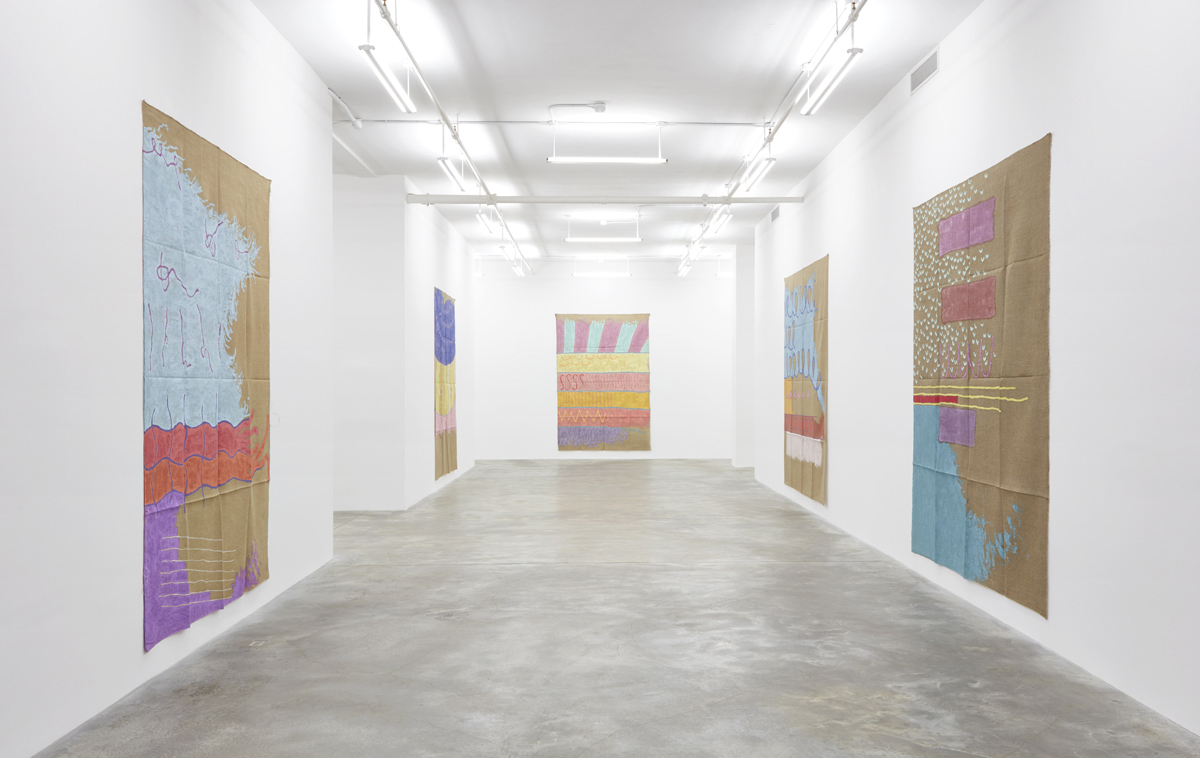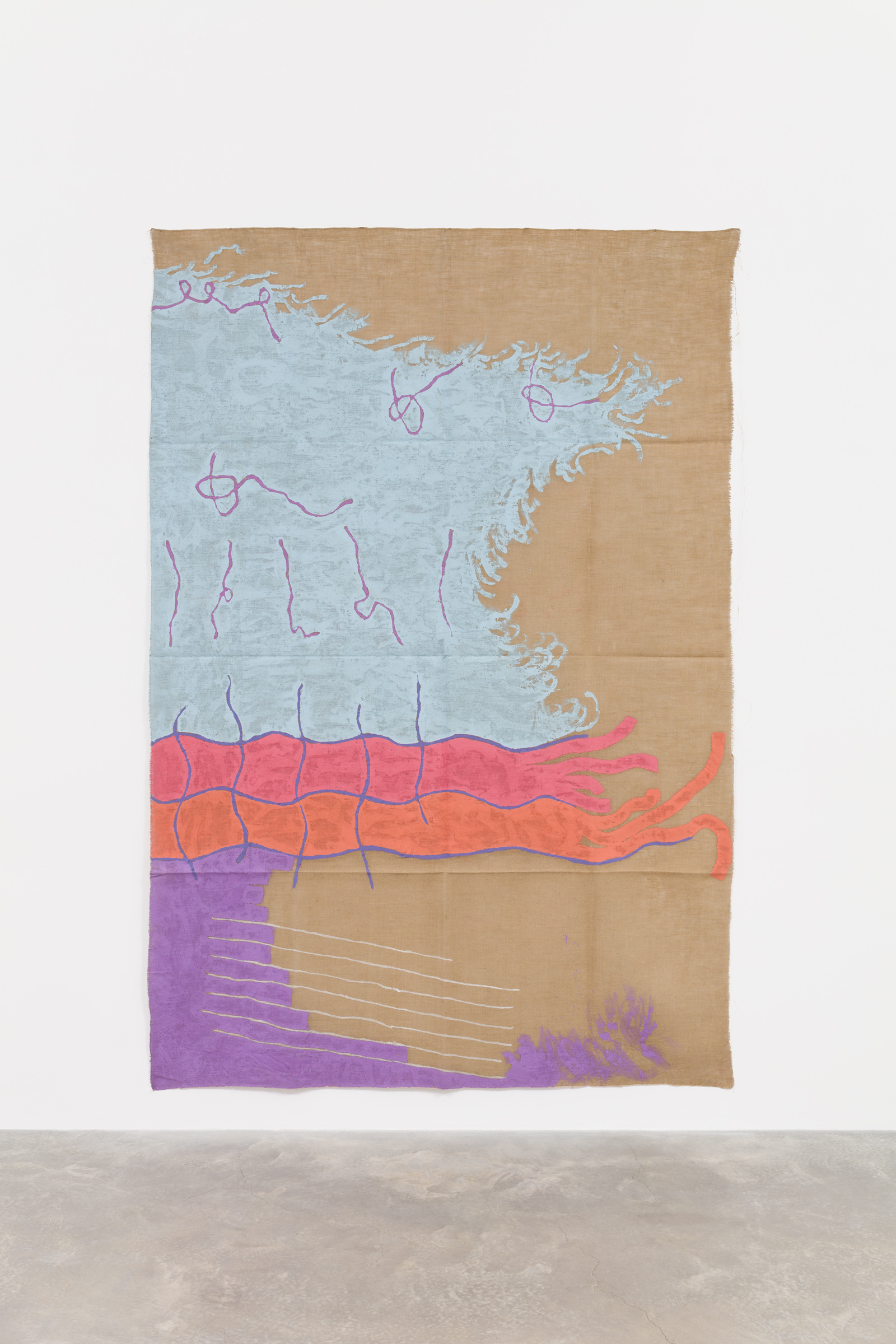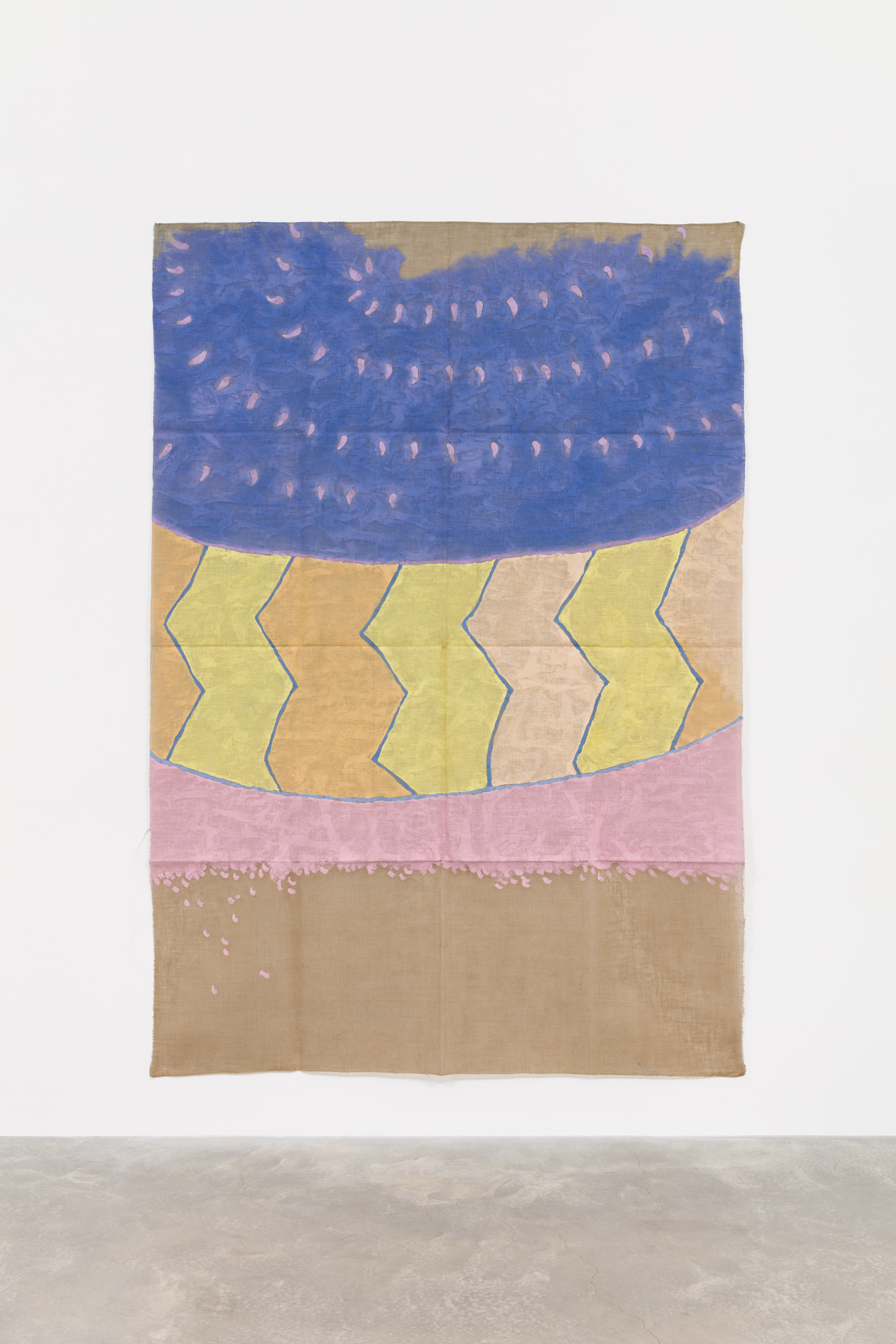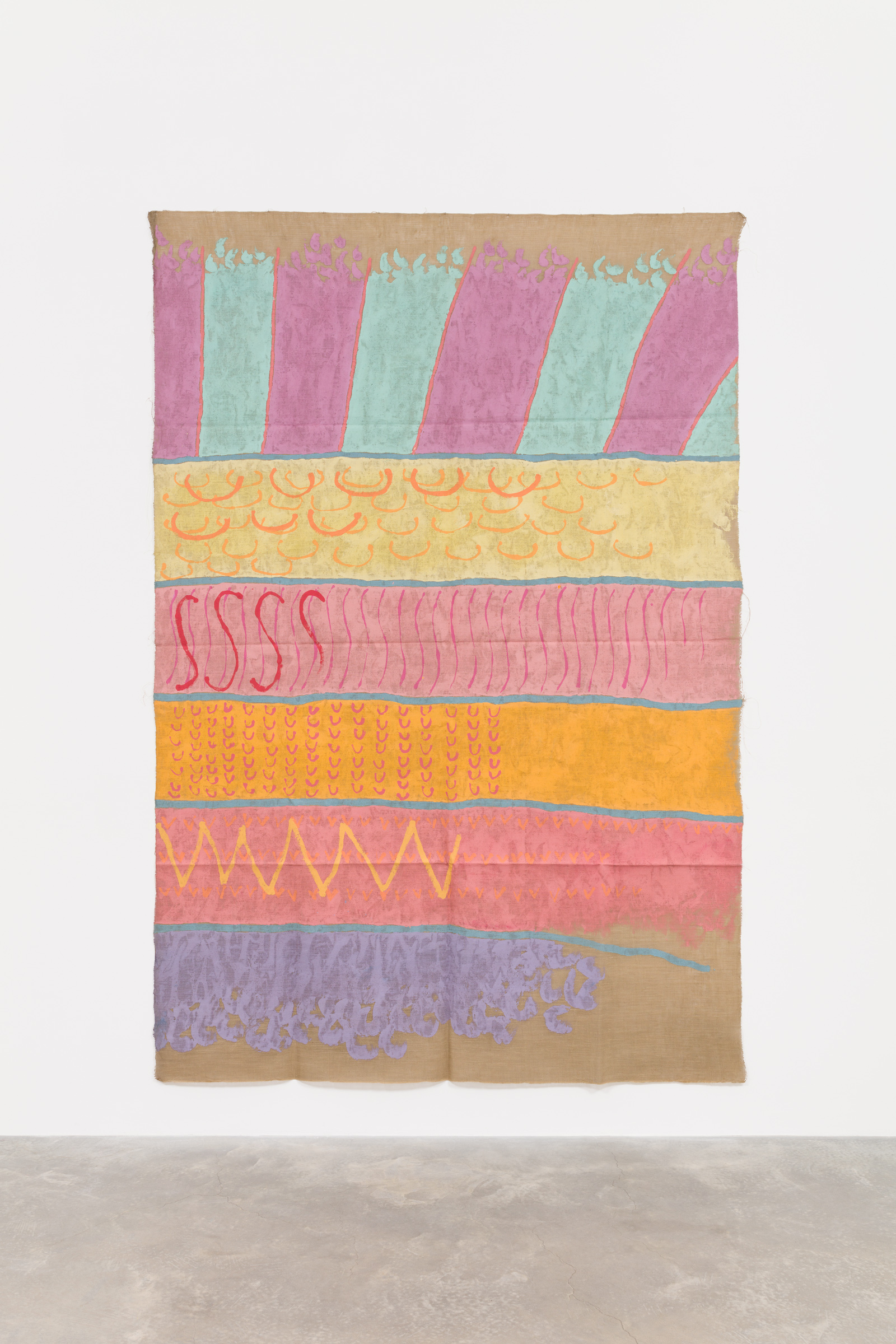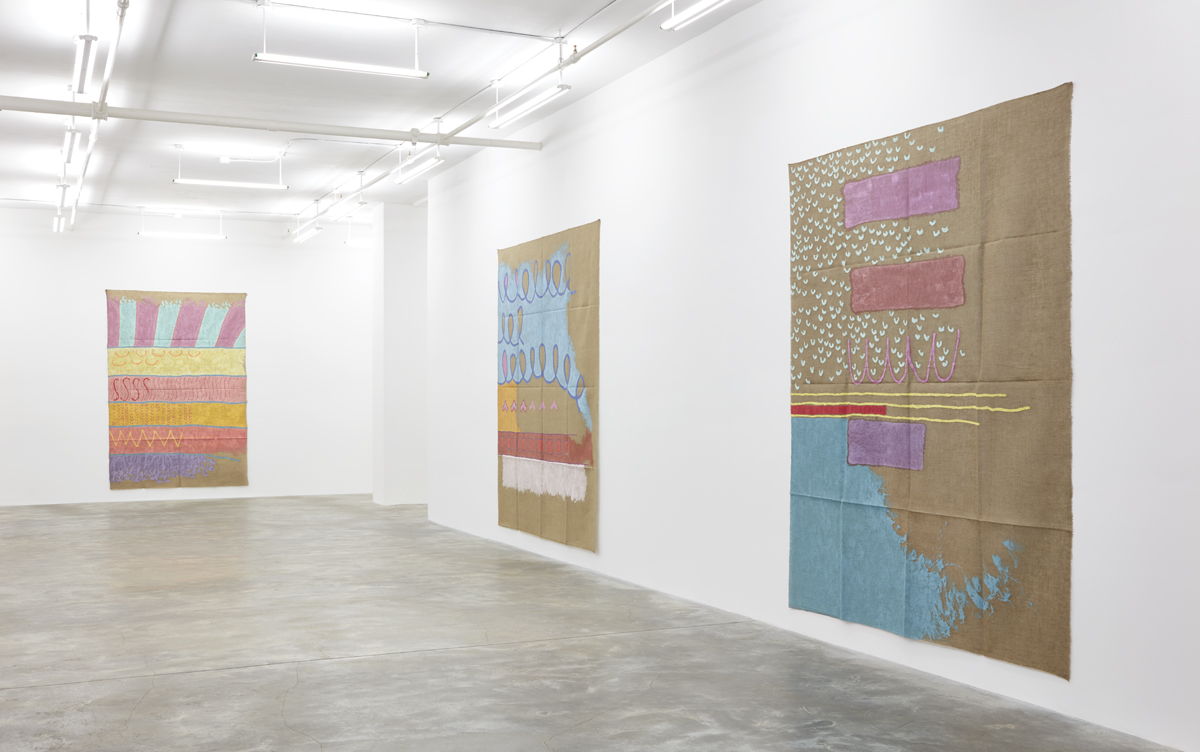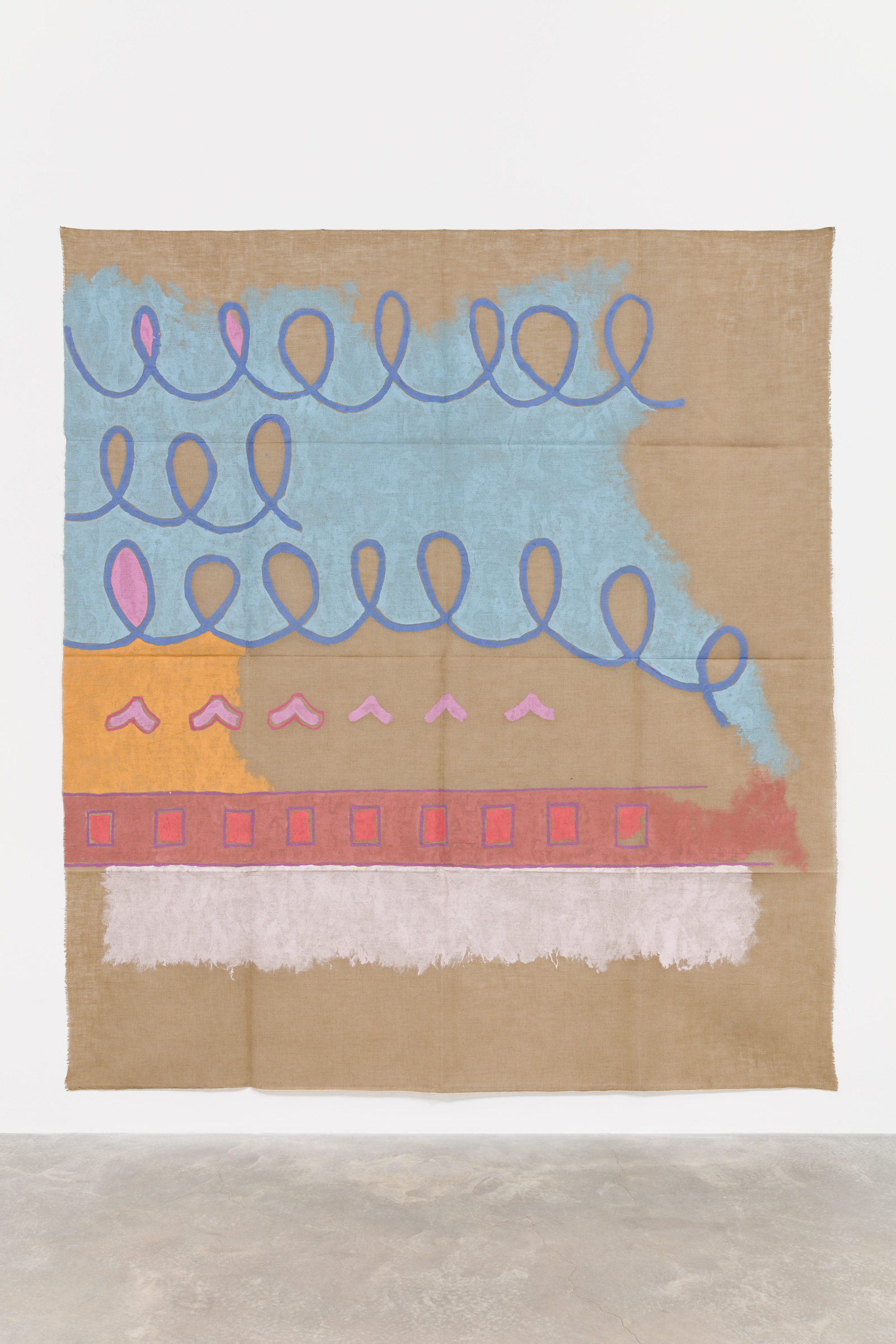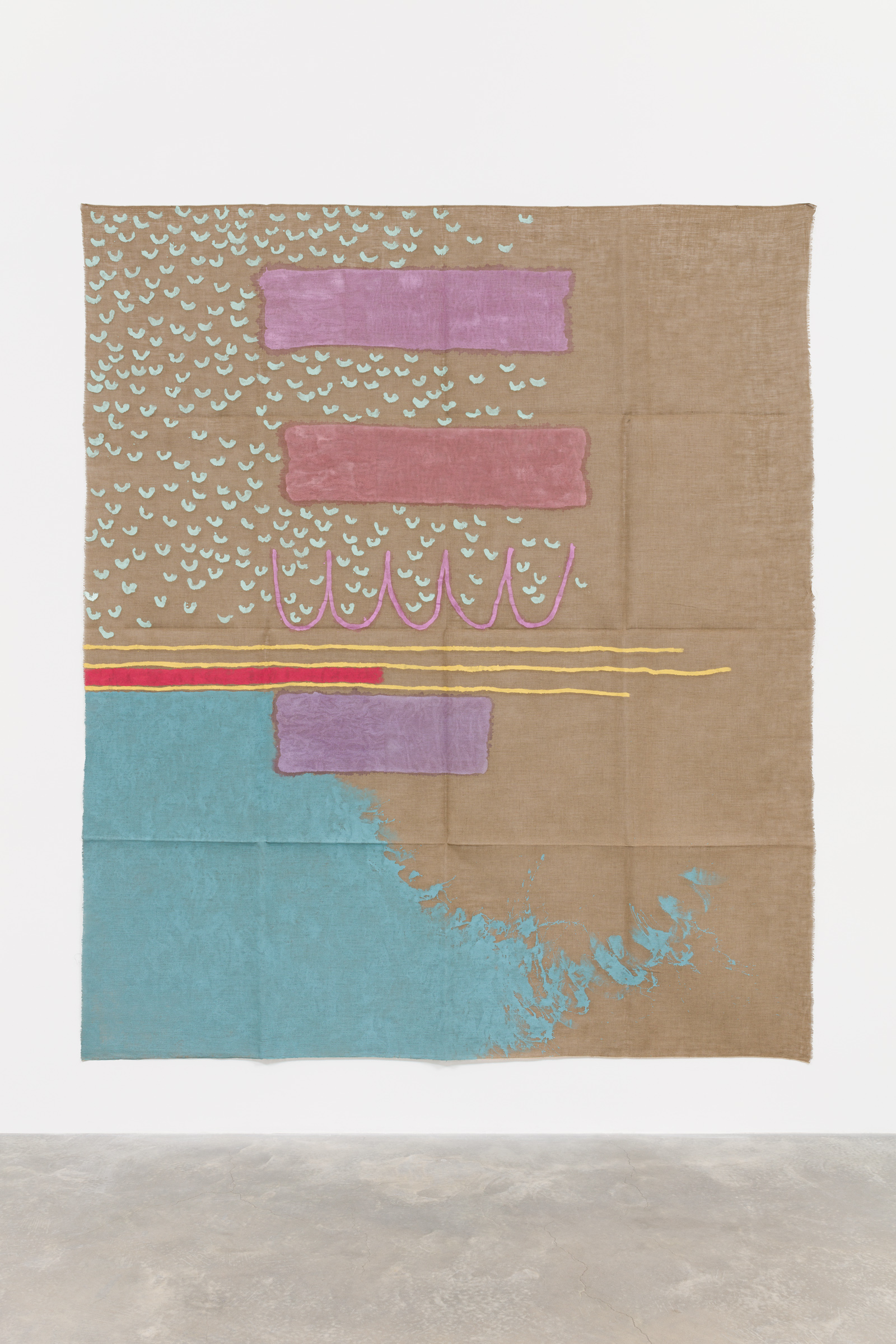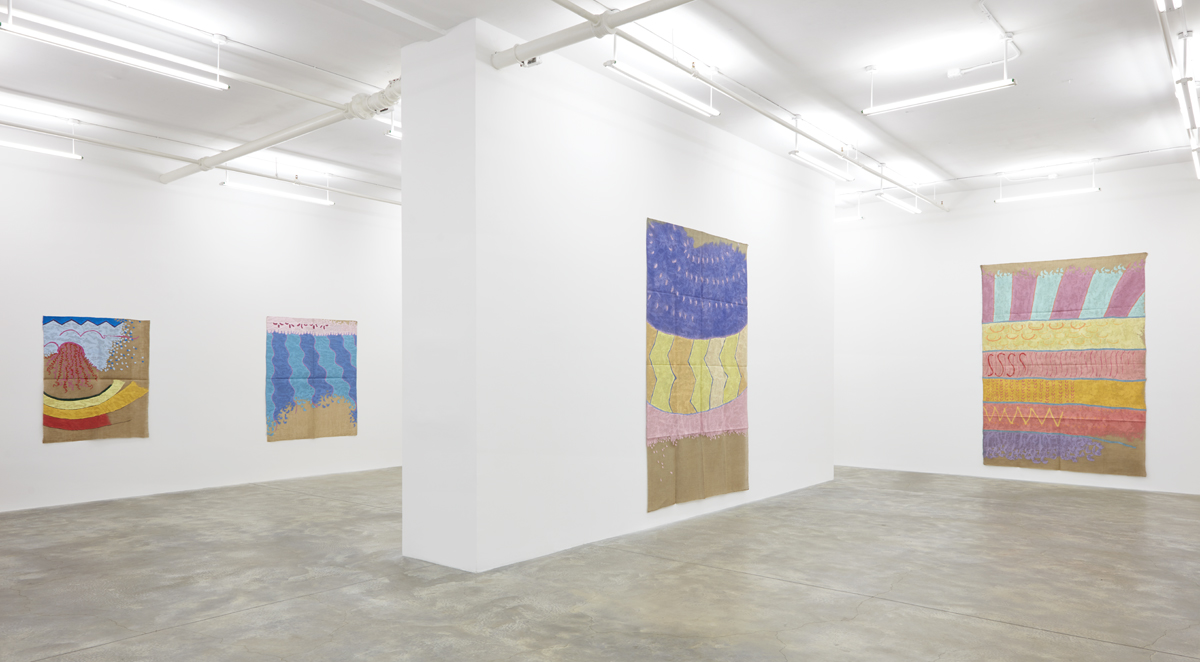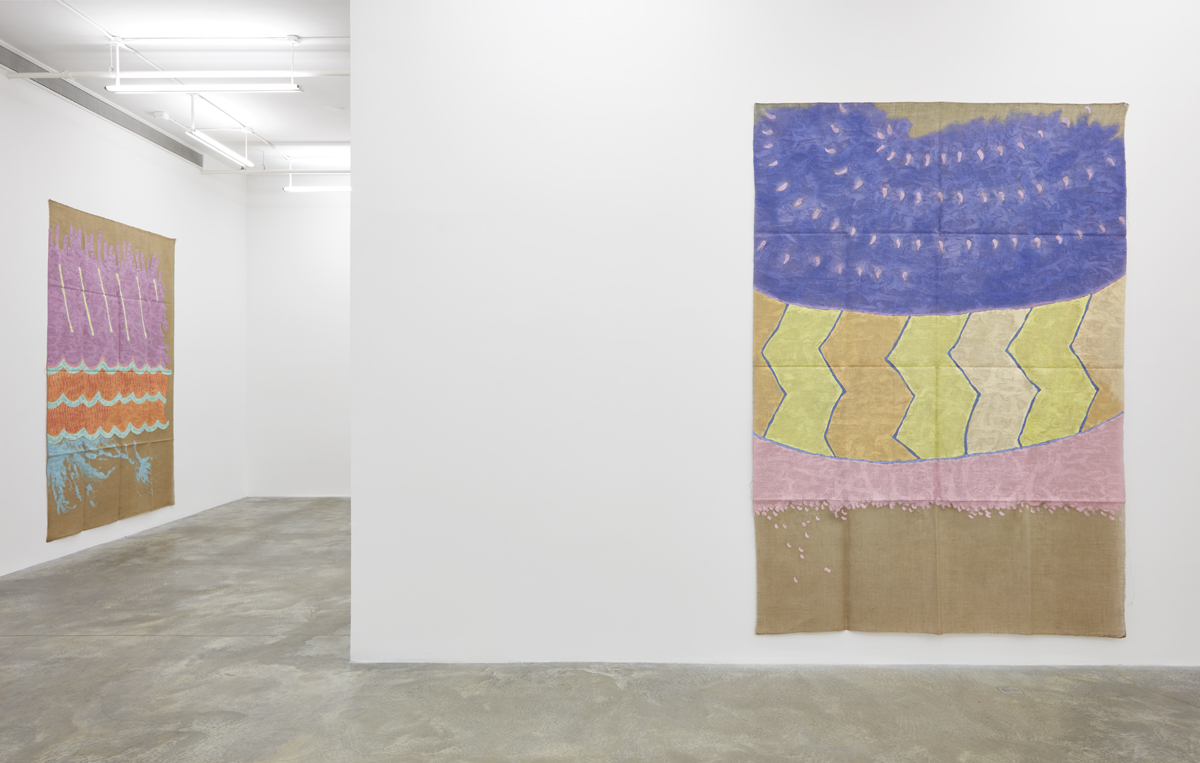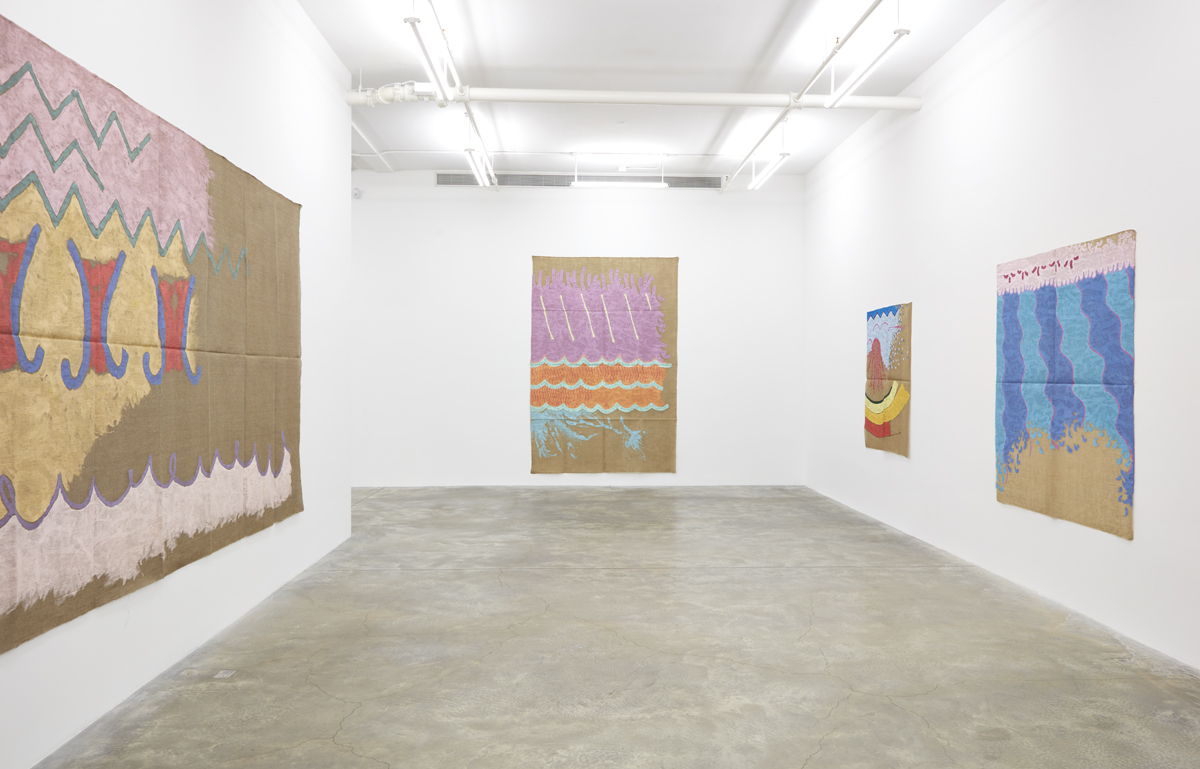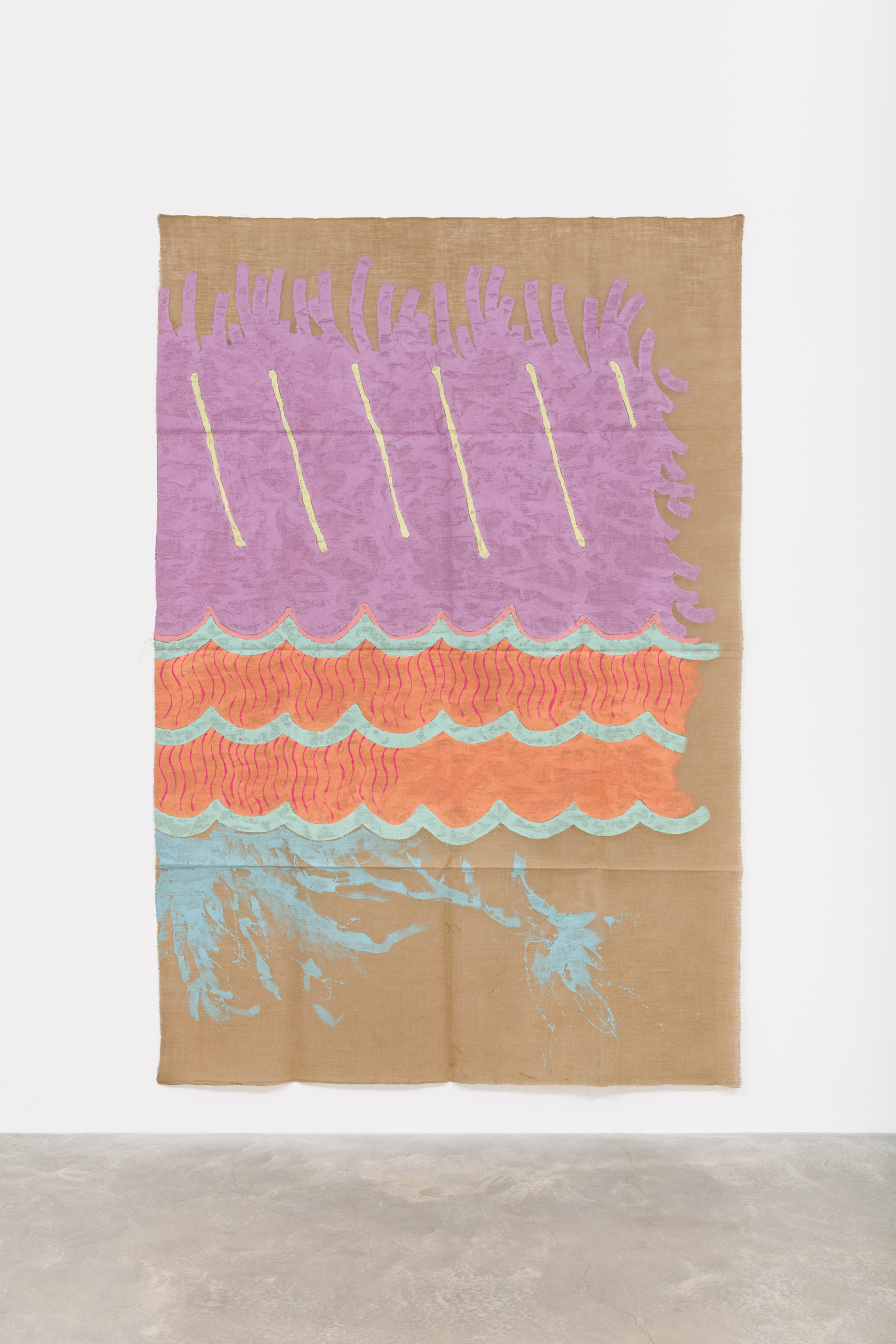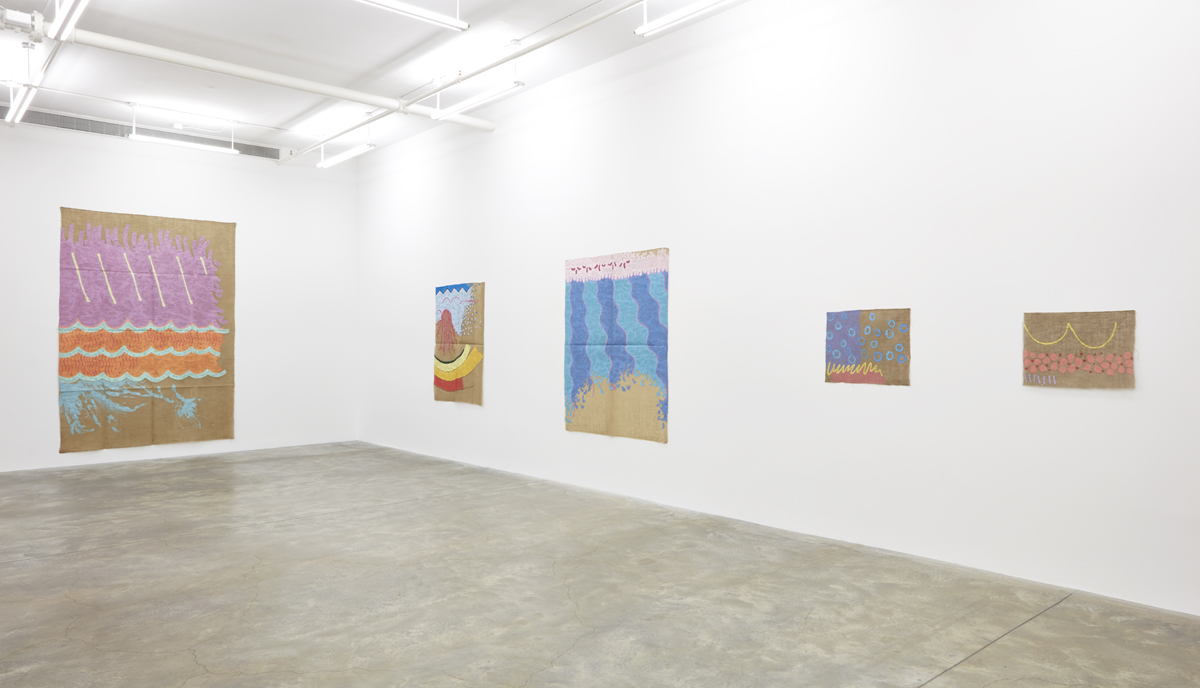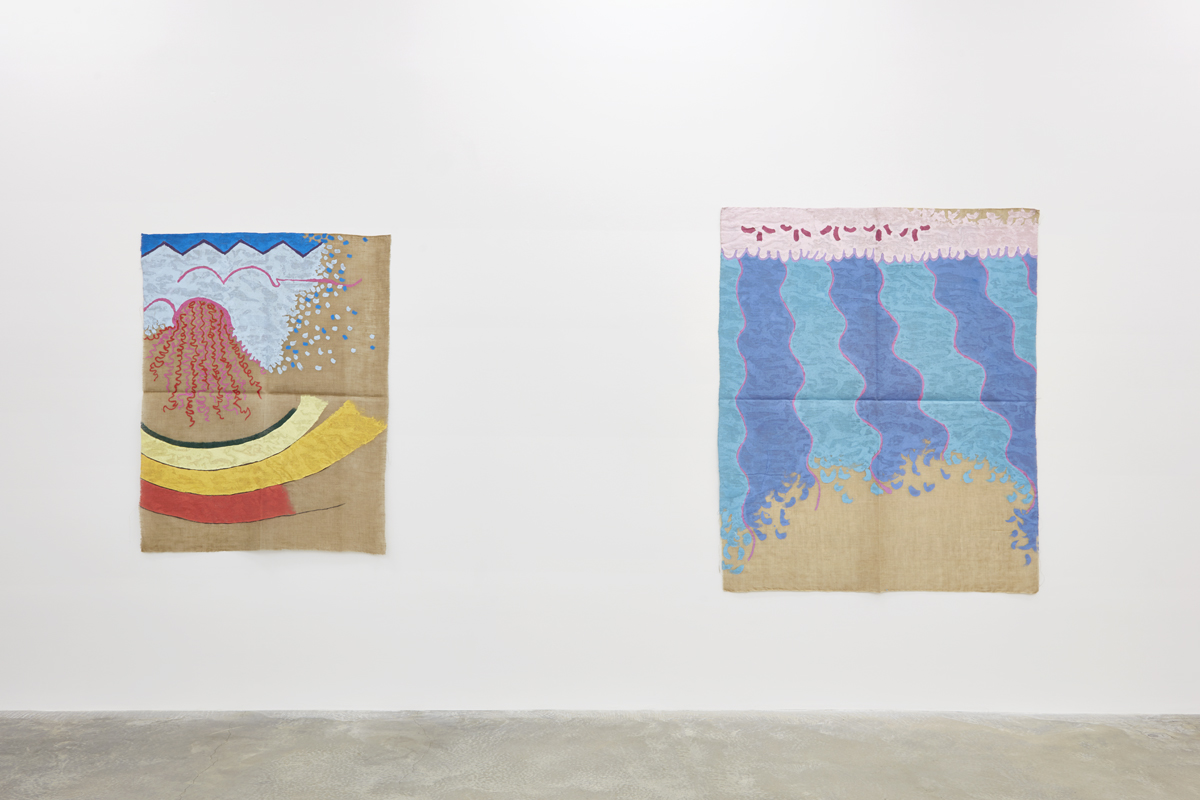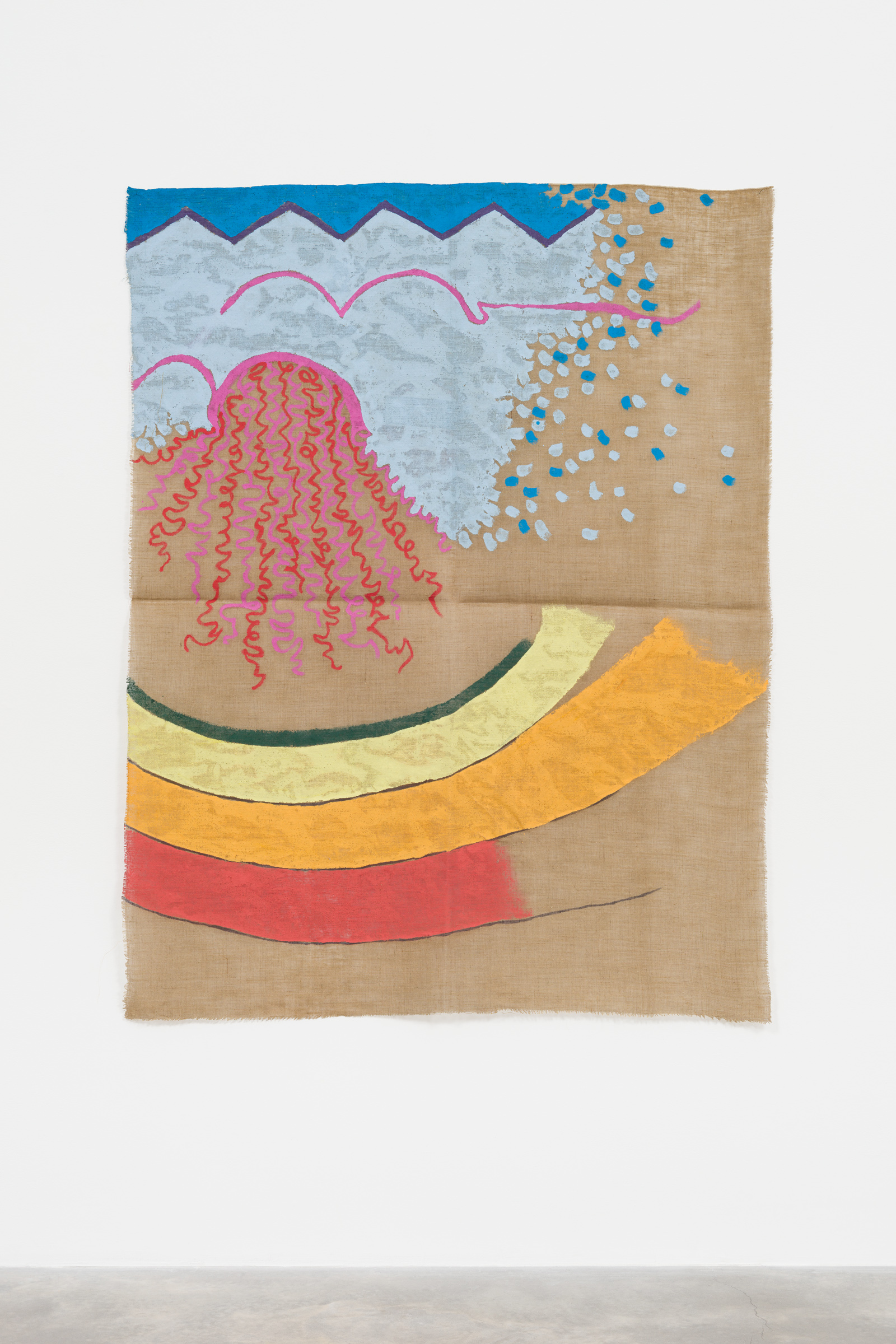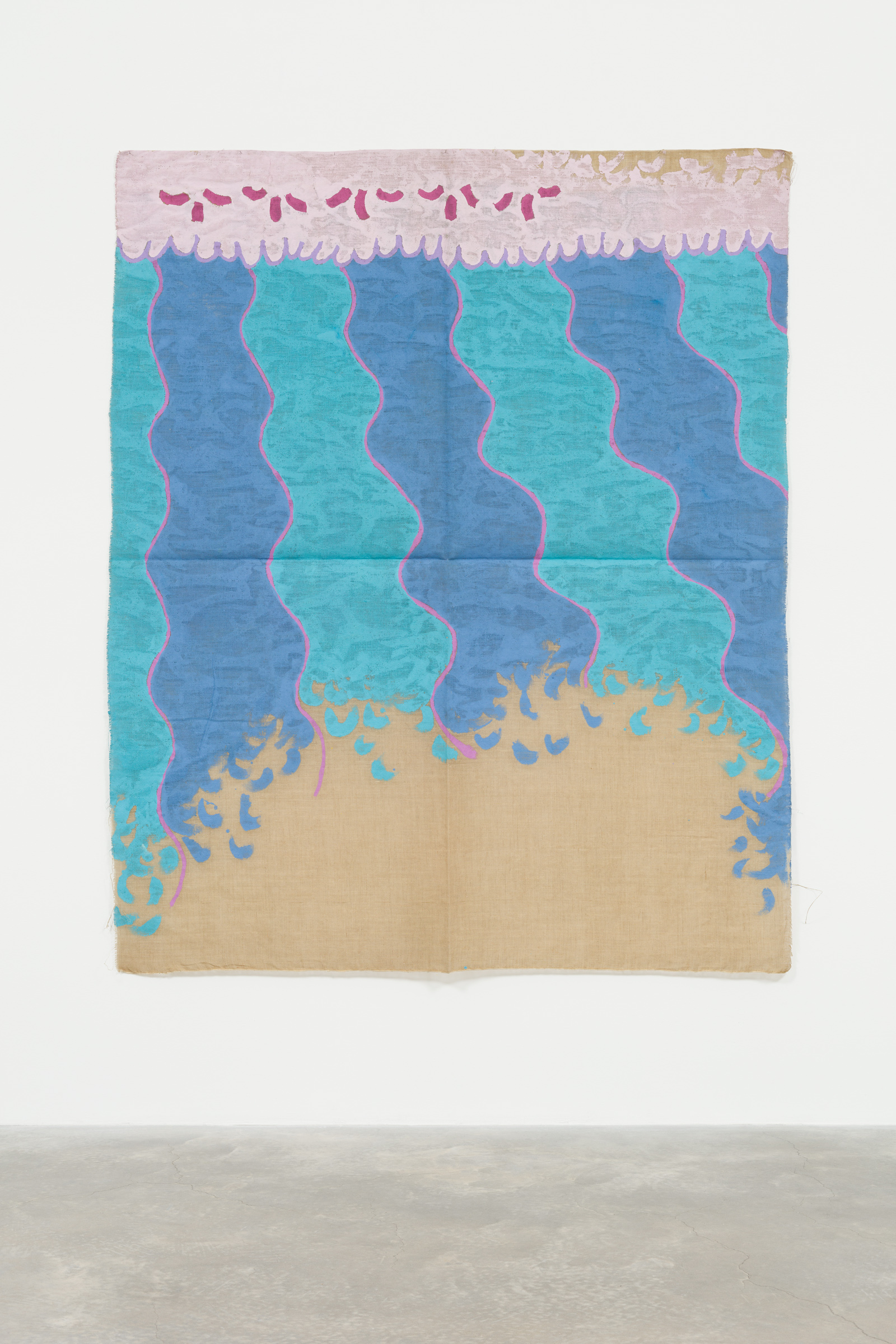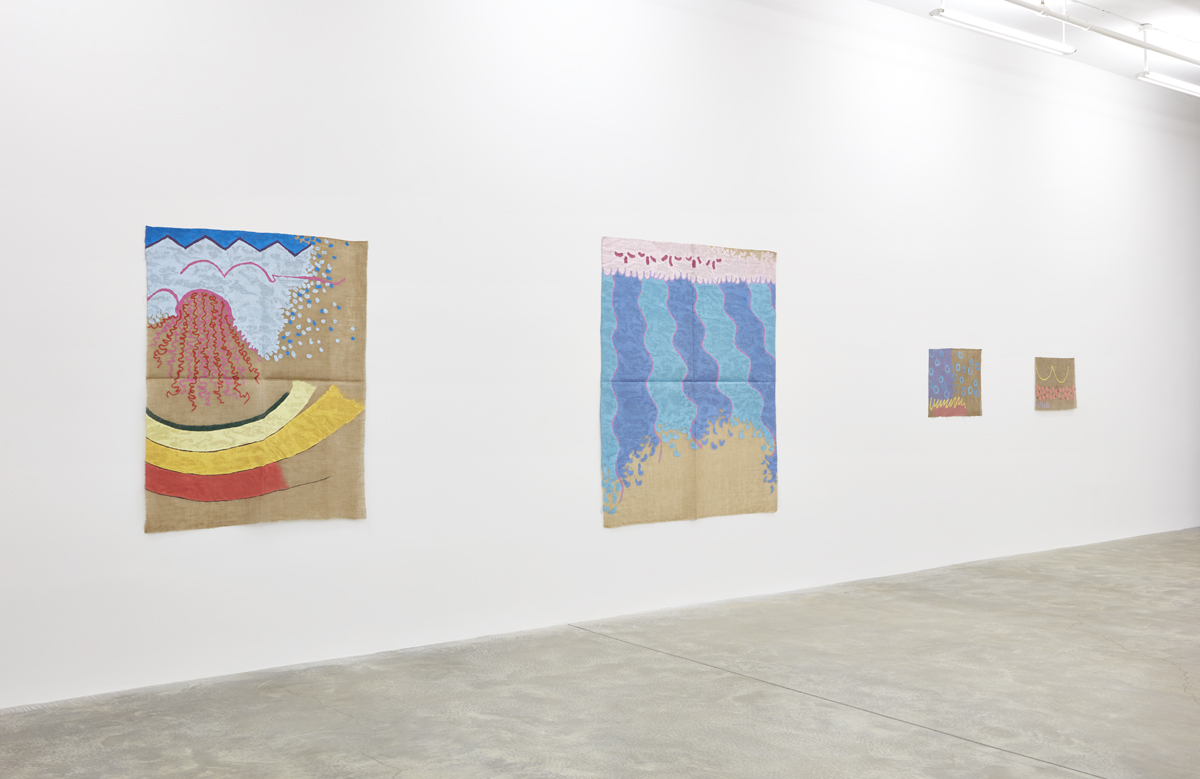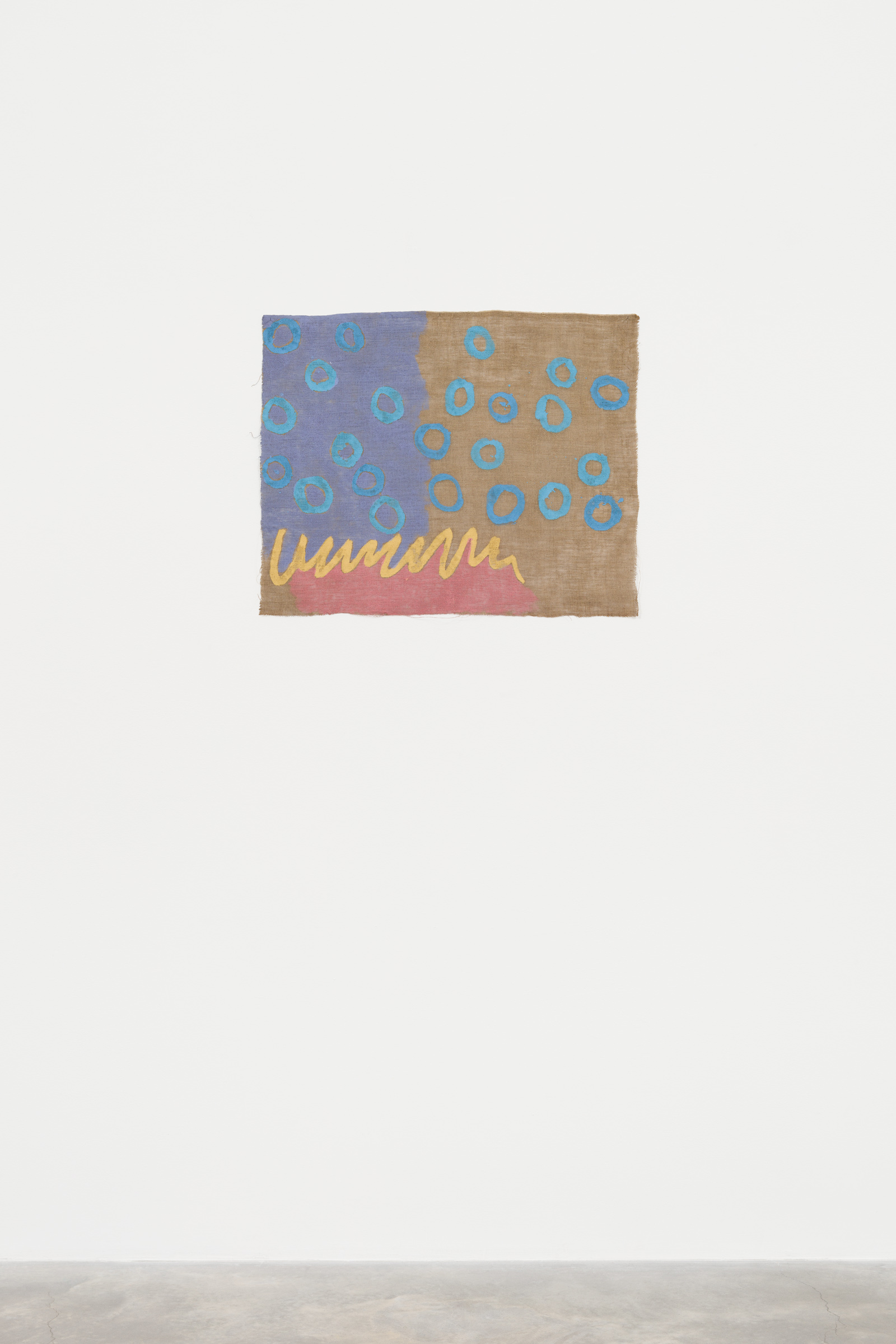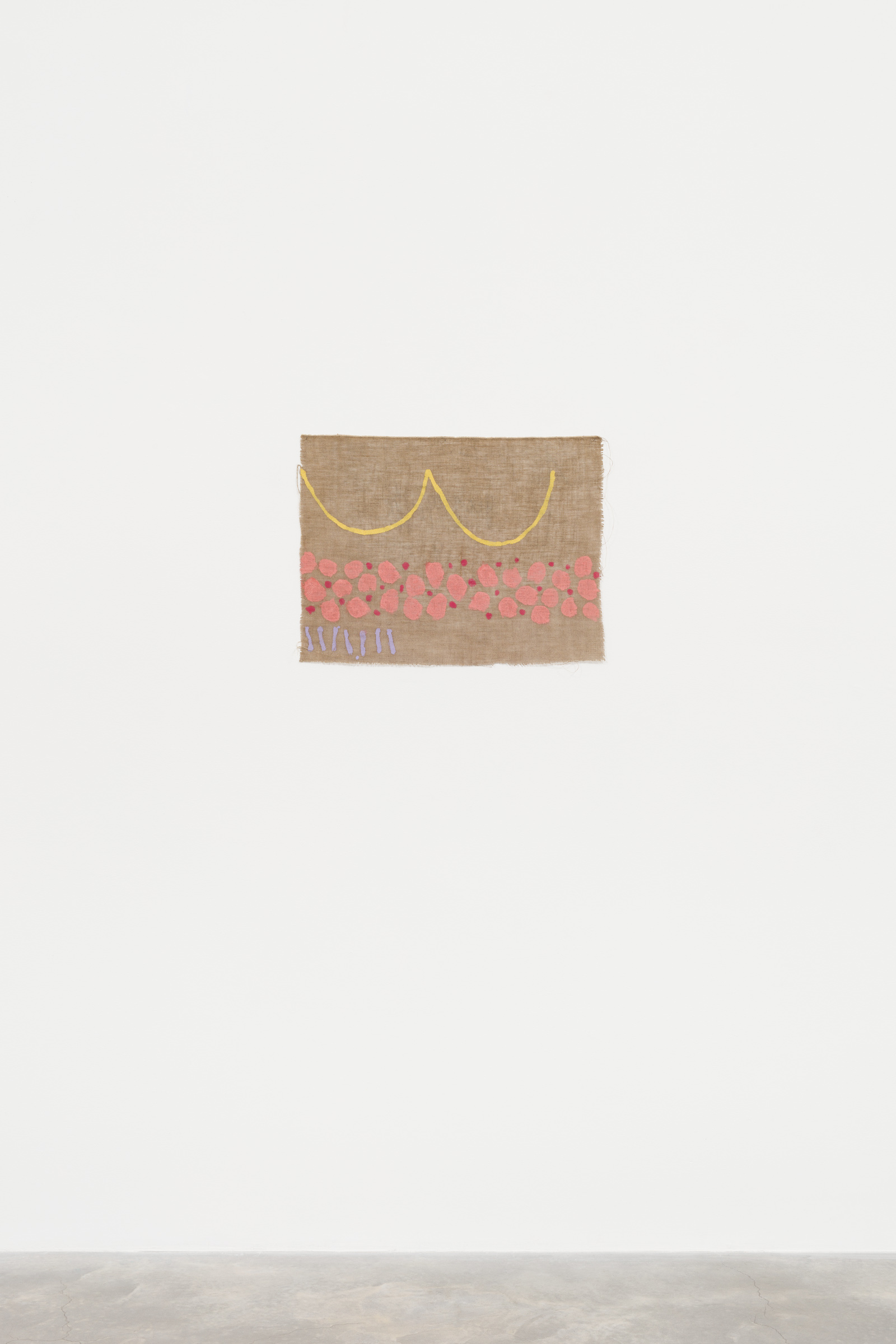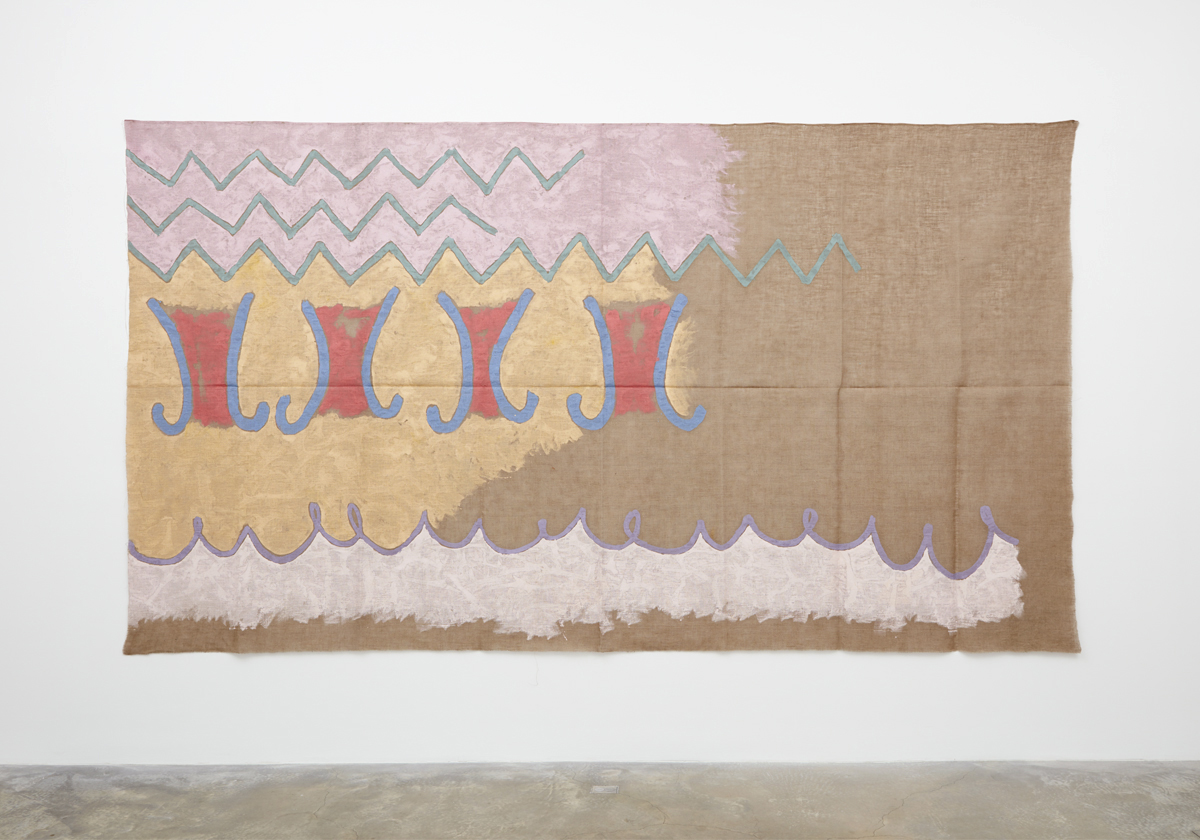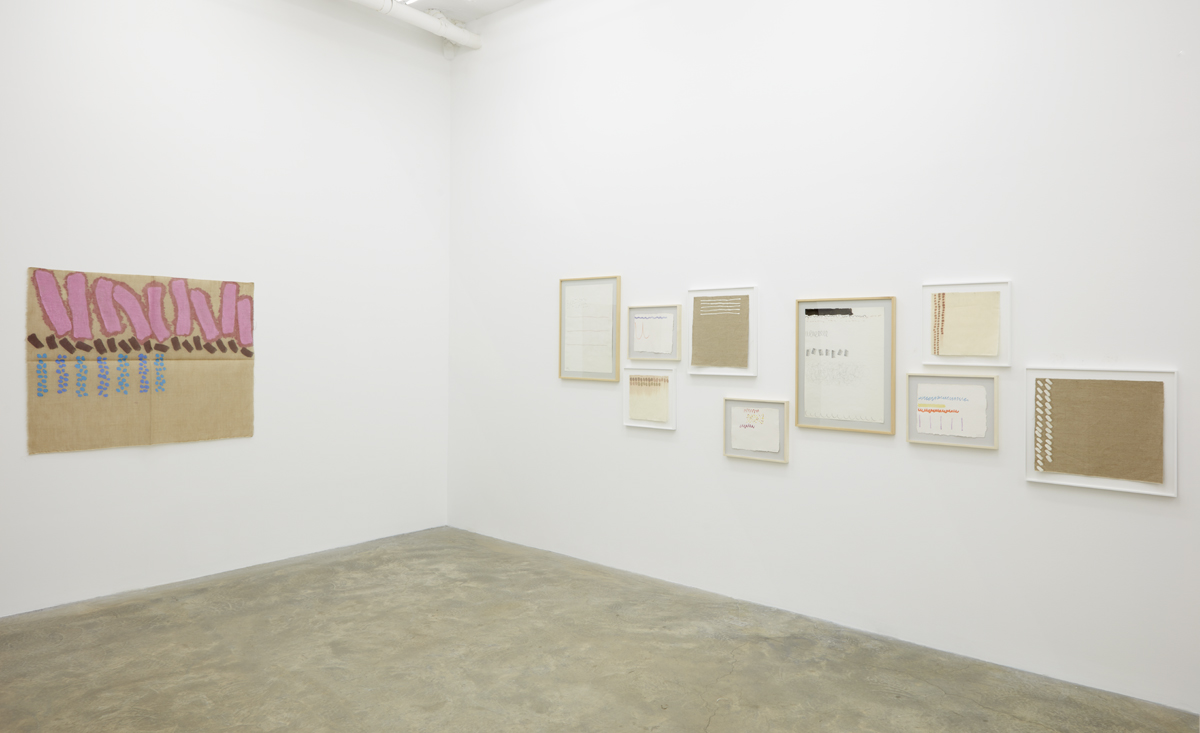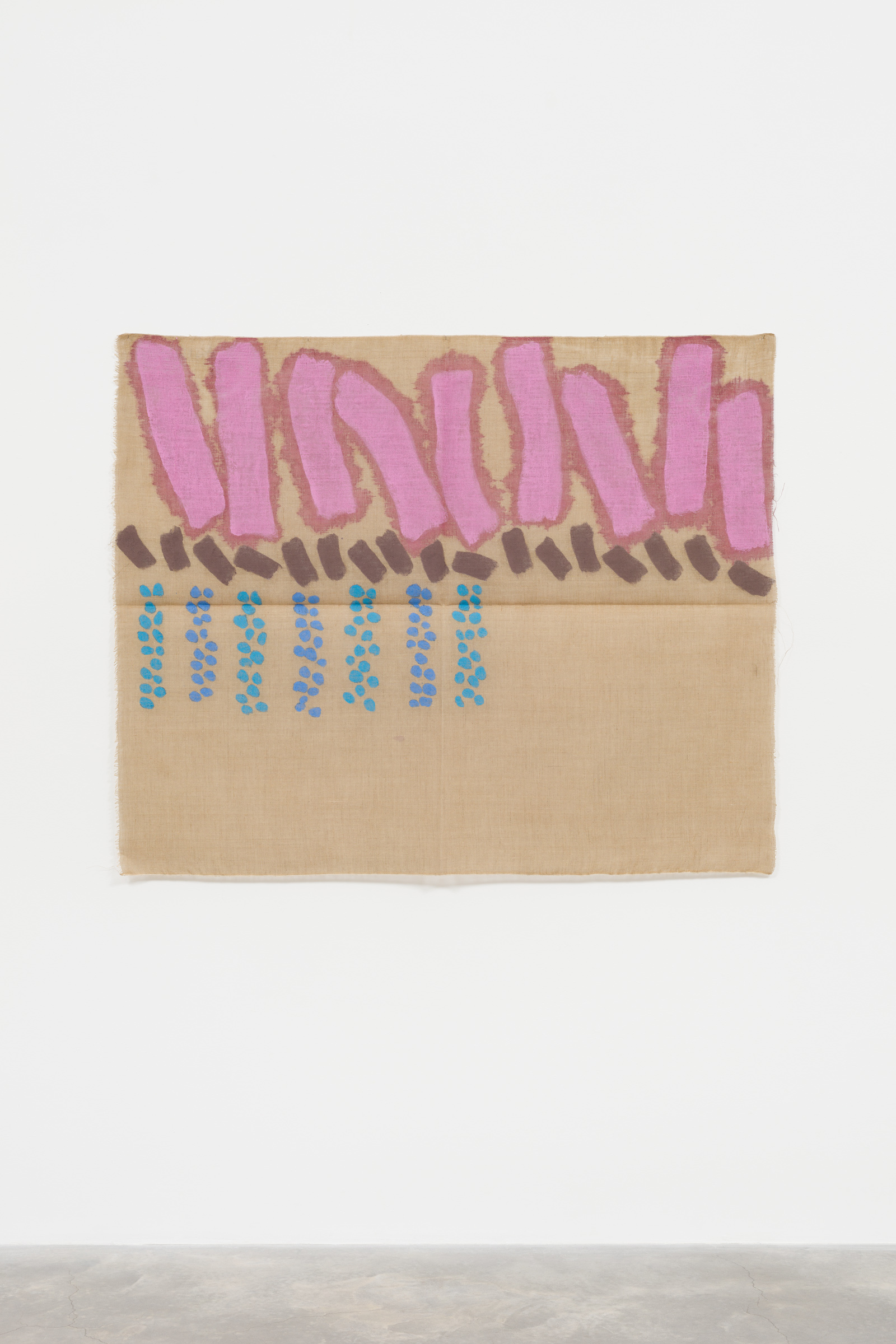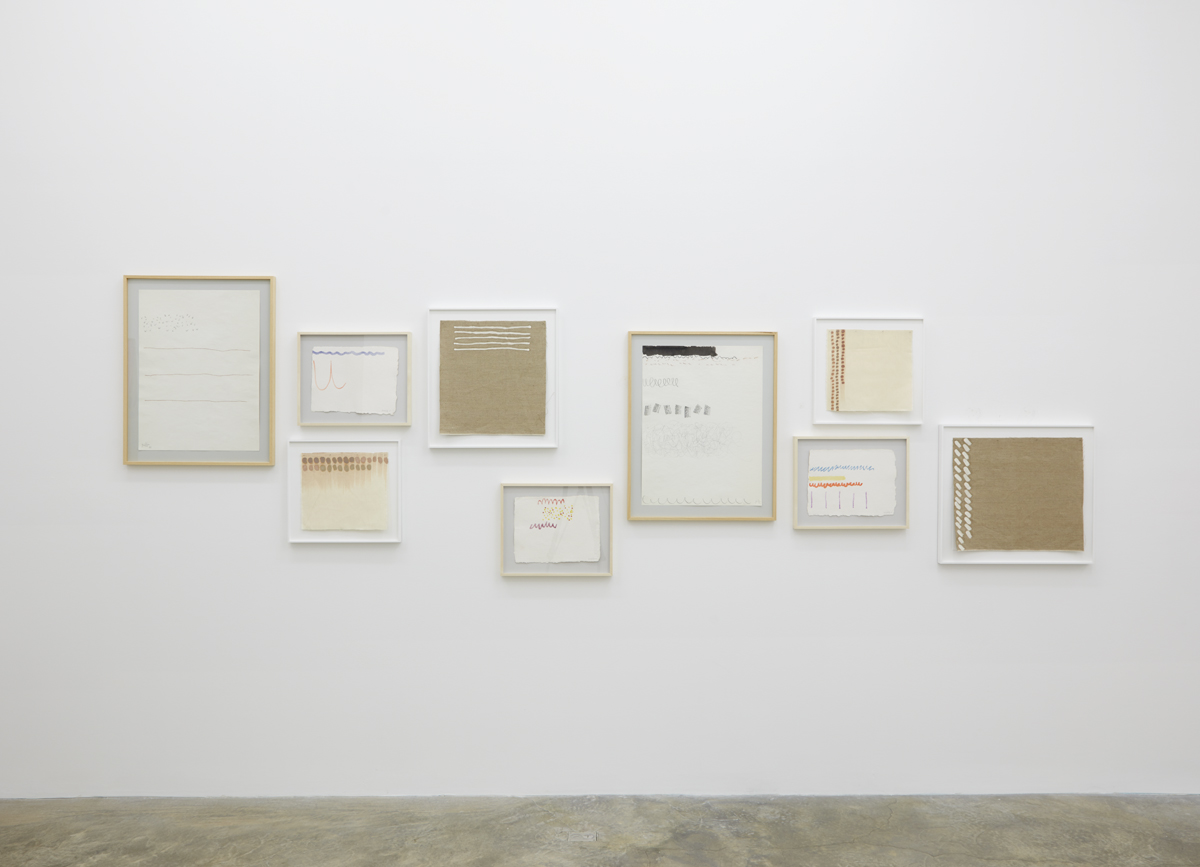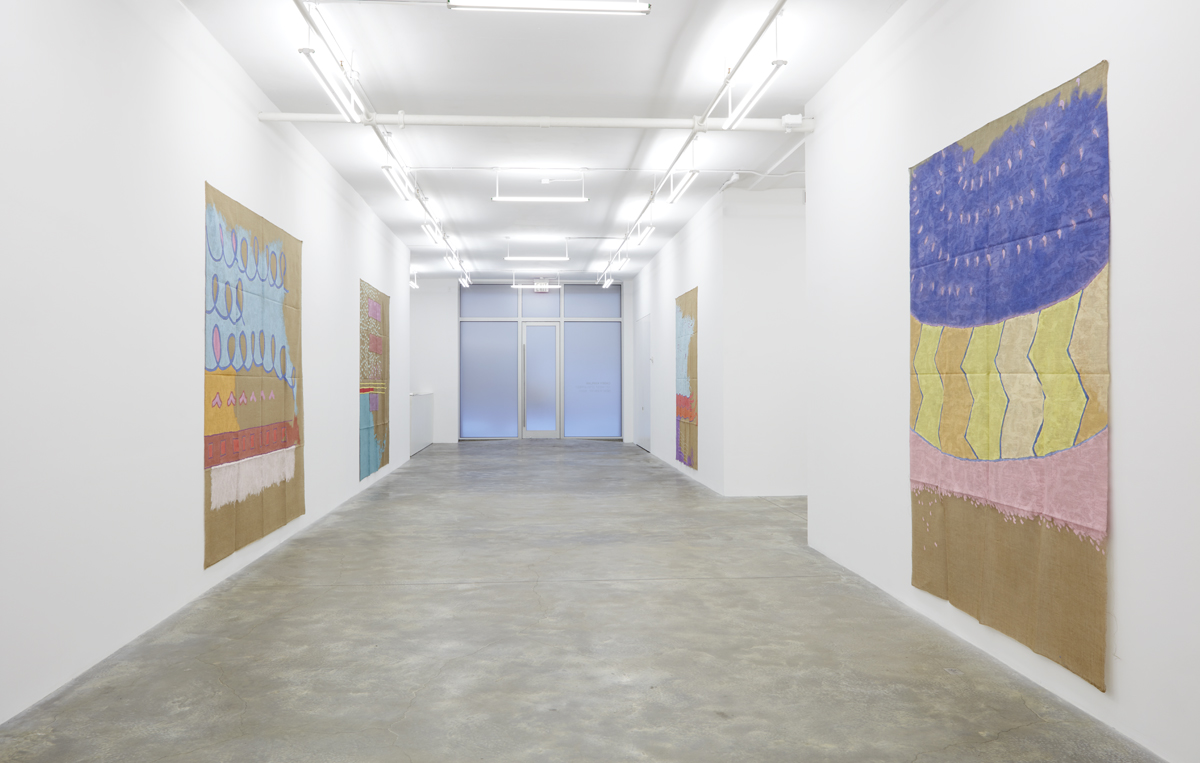Giorgio Griffa: The 1980s
January 11 – February 17, 2018
Casey Kaplan is pleased to announce Giorgio Griffa: The 1980s, the artist’s third solo show with the gallery. This exhibition coincides with Griffa’s first major survey in the UK titled A Continuous Becoming, at the Camden Arts Centre, London from January 26 - April 8, 2018, curated by Martin Clark.
As part of a series of presentations reflecting on the artist’s practice by decade, this exhibition is centered on a transformative period from 1980-89 in which minimalist ideals of the previous decade were infused with a raw and expressive treatment of surface, color and line. Griffa’s shift in visual language was partly inspired by his interest in the work of Henri Matisse and motifs found in Roman frescoes of the ancient city of Pompeii. This positioned Griffa outside of the dominant 1980s international art movement, Neo Expressionism, and Transavanguardia, the prevailing figurative style in his native Italy.
Preparations for this exhibition began in Griffa’s studio in Turin, where the majority of the works on view were unfolded and seen for the first time since their making. During the selection process, the artist remarked that "the paintings are now awake from having been asleep” – a metaphor for the artist’s physical and conceptual process whereby paintings do not start or end, and are never “finished” due to the physical act of folding and unfolding. Folding becomes a method of both normalizing and activating the canvas, highlighting its materiality.
Since 1968, Griffa has followed unique material and procedural methodologies, focusing singularly on the fundamentals of painting. Always starting from left to right, the paintings directly reference language and the universal communication of signs. Working with acrylics on un-stretched canvas, and limiting himself to the temporal constraints of quick-to-dry paint, the works function as archives of the physical act of painting, and as tools to record the passing of time. When exhibited, the works are always nailed directly onto the wall, along their top edges; while stored or traveling, the un-stretched canvases are folded into precise sections, creating geometrical creases that evolve over time, enriching the overall composition as the texture of canvas engages with color and line.
The 1980s marked distinct progressions in Griffa’s practice. Dark canvases are filled with dynamic colors that approach, but never fully envelope the composition with direct representation or narrative. These bold forms and bright tones are seen in combination with playful variations in line and unfinished planes. Griffa eludes any easy art historical categorization, for the works are in many ways most evident of Griffa’s commitment to the ideal of painting, existing outside of any one stylistic, moralistic or temporal constraint. Rather, the works speak to the significance of collective experience, whereby the memory of the artist, art history, and the viewer all coexist.
Giorgio Griffa lives and works in Turin, Italy. In 2015-16, the artist was the subject of a traveling retrospective touring institutions including: Fundação de Serralves, curated by Andrea Bellini and Suzanne Cotter, Porto, Portugal (2016); Fondazione Giuliani, curated by Andrea Bellini, Rome, Italy (2016); Bergen Kunsthall, curated by Andrea Bellini and Martin Clark, Bergen, Norway (2015) and Centre d’Art Contemporain Genève, curated by Andrea Bellini, Genève, Switzerland (2015). A monograph titled "GIORGIO GRIFFA: WORKS 1965 – 2015" was published by Mousse Publishing on occasion of the exhibition. Additional recent solo exhibitions include: Foundation Vincent van Gogh, Arles, France (2016); Mies van der Rohe Haus, Berlin (2012); and MACRO, Museu d’Arte Contemporanea, Rome (2011). Griffa recently participated in the Venice Biennale 57th International Art Exhibition, Viva Arte Viva; his third time at the Biennale following presentations in 1978 and 1980. His work is housed in the permanent collections of Castello di Rivoli, Rivoli, Turin; Dallas Museum of Art, Dallas, TX; Frac des Pays de la Loire, Carquefou; Fundação de Serralves, Porto; GAM, Galleria di Arte Moderna e Contemporanea, Turin Galleria d'Arte Moderna, Rome; Museo del Novecento, Milan; MACRO, Rome; and Tate Modern, London. His survey exhibition "A Continuous Becoming" opens at the Camden Arts Centre, London on January 26, 2018.
Campo azzurro
1988
Acrylic on canvas
114.2 x 76.8” / 290 x 195cm

Giallo + giallo
1989
Acrylic on canvas
112.20 x 78.30” / 285 x 199cm

Campo e segno
1988
Acrylic on canvas
114.20 x 74.40” / 290 x 189cm

Tre arabeschi
1985
Acrylic on canvas
113.8 x 102.4” / 289 x 260cm

Campo azzurro
1986
Acrylic on canvas
112.2 x 95.7” / 285 x 243cm

Campo viola
1988
Acrylic on canvas
Acrylic on canvas

Ricurvo
1987
Acrylic on canvas
57.1 x 44.1” / 145 x 112cm

Blu + blu
1988
Acrylic on canvas
68.90 x 57.10” / 175 x 145cm

Cerchi blu
1984
Acrylic on canvas
20.9 x 26” / 53 x 66cm

Linea gialla
1982
Acrylic on canvas
17.3 x 22.8” / 44 x 58cm

Campo giallo
1986
Acrylic on canvas
89 x 158.3” / 226 x 402cm

Tre segni
1982
Acrylic on canvas
41.7 x 51.2” / 106 x 130cm

Giorgio Griffa: The 1980s
Top
